
views
Planning the Waterfall
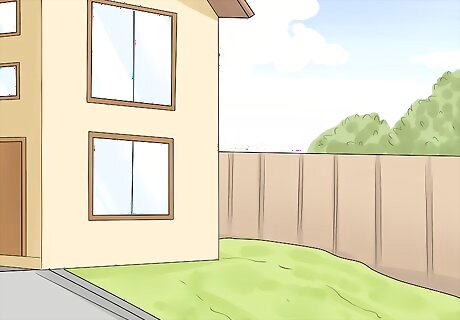
Choose a location. You can install a waterfall on a natural slope or hill, or you can dig out the slope yourself. Alternately, if the soil or foundation you're digging into is difficult to excavate, consider building the stream above ground using a combination of rocks and gravel as your base. How much of a slope will you need? The absolute minimum slope you need is a 2 inch (5cm) drop for every 10 feet (3m) of stream. Of course, the steeper the slope, the faster the water runs and the louder the sound of the waterfall.
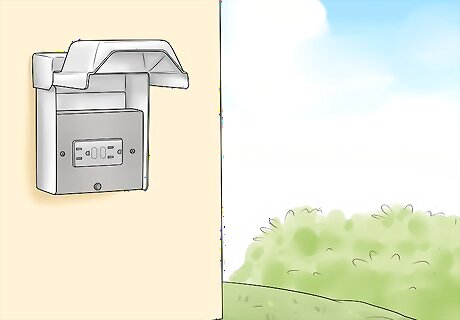
Think about placing your waterfall near an electrical source. You want your lower basin, which sends water back up to the top of the waterfall, to be located near an electrical source so that you don't have to string an unsightly extension cord across your otherwise pristine garden.
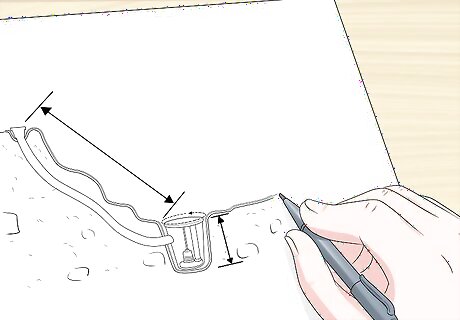
Plan the size of your stream. Knowing just how much water passes through your stream and waterfalls will help you determine how large your upper pool and lower basin need to be. (You don't want your garden overflowing when you turn the pump off.) Here's how do to that: First, estimate the amount of water that passes through a linear foot of your stream. If your stream is relatively small — say it's about 2 to 3 feet (0.6 to 0.9 m) wide and 2 to 3 inches deep — estimate about 5 gallons (18.9 L) of water per linear foot. Add to or subtract from that estimate depending on the size and depth of your proposed stream. Next, measure the total stream capacity. Measure out how many linear feet your entire stream takes up. Now, simply make sure that either your upper pool or lower basin holds more than the total stream capacity. So if your stream capacity is 100 gallons (378.5 L), a 50 gallon (189.3 L) basin and a 200 gallon (757.1 L) pool will easily accommodate the stream.
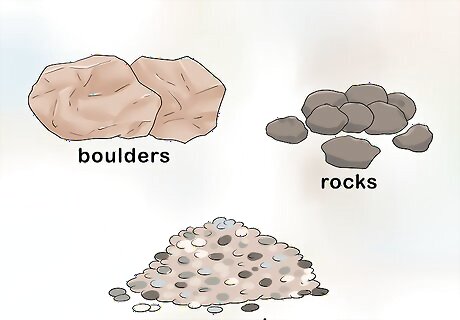
Get your boulders, rocks, and gravel. Generally, waterfalls contain three different sizes of stone: boulders, or larger stones, which frame the waterfall(s); rocks, or medium-sized stone, which serve as the connecting stones; and gravel, which fills in the bottom of the stream and in between cracks and crevasses. Visit a "rock," "quarry," or "gravel and stone" dealer in person to get a feel for what kinds of stones your waterfall might enjoy. This is a much more reliable way of getting exactly what you want, as opposed to merely ordering a kit and hoping that the stones are ones that will look good in your backyard. Here's what you can expect to order when it comes time to buying stones for your waterfall: 1.5 - 2 tons of large (12 - 24 inches) boulders for upper pool and lower basin, plus 2 - 6 tons extra for 10 feet (3.0 m) portions of stream that are above ground .75 ton of medium (6 - 24 inches) rocks per 10 feet (3.0 m) of stream .5 ton of small (.5 - 2 inches) gravel per 10 feet (3.0 m) of stream, plus 1 - 2 tons for the upper pool and lower basin each
Setting up the Basics
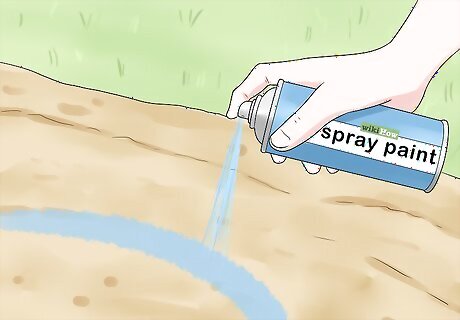
Prepare for any digging you may need to do by outlining the waterfall placement with spray paint and calling the relevant utility authority. Spray-painting the outline of your stream — and any waterfalls — will help greatly when it comes time to dig. Calling 811 and making sure your excavation won't damage any water or gas mains is a must.
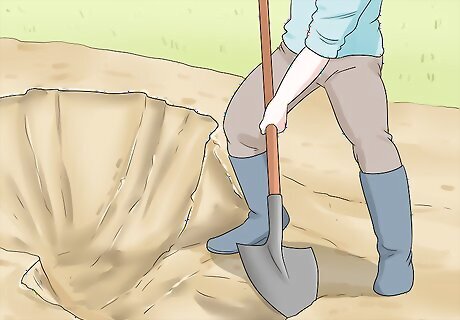
Start excavating your foundation if you need to. Dig out any part of your stream that'll be below ground. Next, dig out a large enough area for your lower sump basin, making sure to leave space for surrounding gravel and stone. Finally, place medium-sized rocks and larger boulders around the perimeter of the stream to begin to hem in the stream.
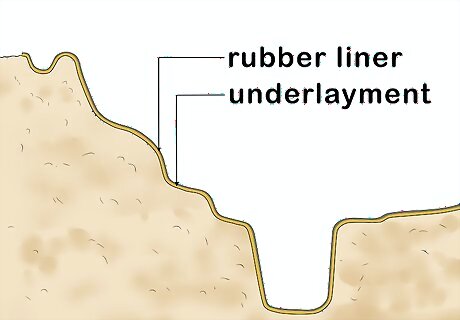
Measure out and cut both underlayment and rubber liner. Starting with underlayment and then finishing with the liner, stretch them over the entire distance of the waterfall, into the lower basin, and across pond (if there is one). Place some of the rocks on the membrane plastic to hold it in place, or use poly rock panels in sheets to save time. When placing the underlayment and liner, be sure to leave slack at the bottom of each waterfall. Placing rocks and boulders onto these areas can stretch out the liners, causing rips and piercings if there's not enough slack.

Set up your lower basin. Drill holes into your sump basin if it doesn't already come with them. (See below for more instructions.) Place your sump basin into the excavated hole at the bottom of the waterfall, above the underlayment and liner. Insert the pump to the sump basin, connect the water line, and make sure the hose extends all the way up to the upper pool. Once the basin is set up, secure in place by adding layers of small - medium size stone (not gravel) around the basin. Attach the lid of the sump basin. Some sump basins will come already perforated, but many will not. Basins need holes to allow the water to come in. If you need to perforate the basin yourself, the job isn't difficult. Starting from the bottom, drill a hole into the side of the basin using a 2 inch bit. Moving around the side, drill a hole every 4 inches. After you've drilled around once, move up an inch or two and continue drilling another revolution. When the bottom third of the basin is perforated, graduate to a 1 inch bit for the middle third section, and finally a 3/8 inch bit for the top third. Stream waterfalls require a stronger pump and a longer hose than pond waterfalls, because they need more pressure to get water back to the beginning of the stream.
Crafting Individual Waterfalls
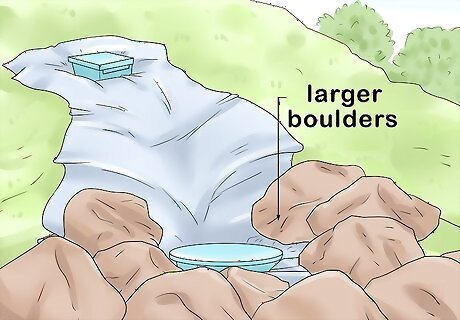
Start from the bottom up, placing larger boulders first. Always start from lower elevation and work your way up to higher elevation when placing the first rocks. A good bet is to start off with your largest boulders in place so that they give context and contrast. Backfill any soil beneath large boulders as needed, paying particular attention to boulders perched on elevation. Placing a larger character boulder behind a the actual beginning of the waterfall itself is a great way to build dimension in your waterfall. Character boulders to the sides of the waterfall work great as well.
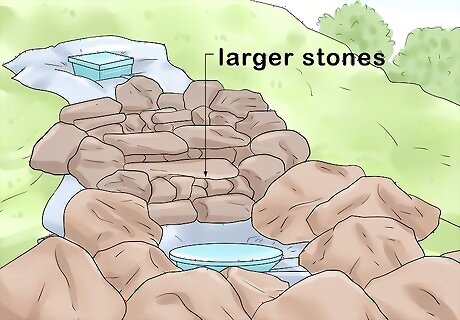
Use larger stones near each waterfall if possible. In nature's streams, especially near waterfalls, smaller stones and pebbles tend to get swept away down current. That's why larger stones look more natural close to waterfalls. Stick with a good combination of medium and larger stones for a more natural look if you feel like your waterfall looks artificial.

Periodically step back from your waterfall and look at the piece from a different angle. In the moment, placing stones gives you a great idea of how things will look up close. What it doesn't do is give you a perspective of how things look from afar. Periodically take a steps back from stone placement and decide whether you like the arrangement of stones where they are. You may place a single stone or boulder four or five times before you're happy with where it's placed.
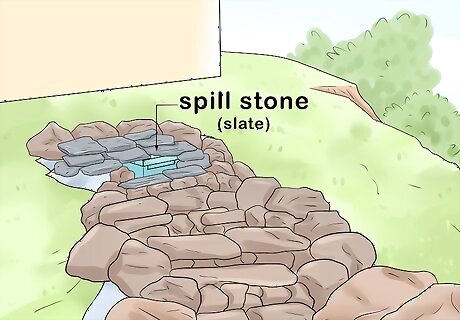
Place the spillway rocks carefully. Slate makes for an excellent spill stone. Don't be afraid to use smaller stones or even small pebbles to create the base for your spillway. Here are some other things to keep in mind when building spillways: If you're having trouble keeping your spillway stone in place, sometimes a larger stone on top of it will anchor it in place while you build its base. Always measure the slope of your spillway with a level. This is important for two big reasons. First, going front to back, you'll want your spillway stone to be either level or sloped slightly downward; if it's sloped upward, water isn't going to travel down it nicely. Second, going side to side, make sure your spillway stone is level; this will ensure that the water travels over the entire surface evenly and doesn't pool on one side. Small cobblestones or rocks jutting out from beneath spillways can give accent to an otherwise uniform waterfall.
Putting it All Together
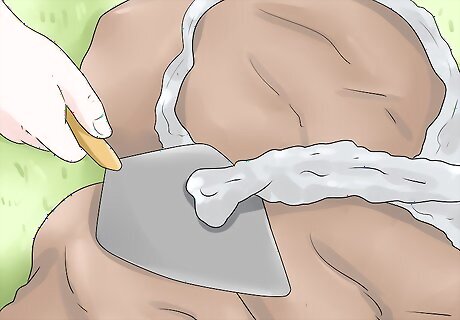
Use mortar to stabilize any larger stones. If you're dealing with a particular large group of stones on a bigger waterfall, don't be afraid to mortar them together into place. Mortaring larger stones will help stabilize them and ensure that none of them will tip over should the landscape shift slightly.

Force smaller stones and gravel beneath all sides and spillways to keep water from seeping through. This also gives the waterfall a more natural look, shielding eyes from unsightly liner material.
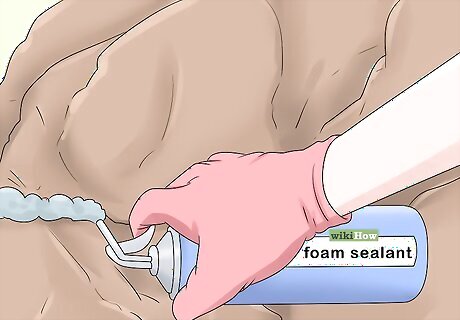
Foam in between any small cracks and crevasses using a specially-made dark foam sealant. Foam sealant works best on cool and damp stone surfaces, so mist your stream and waterfall if necessary beforehand. Start spraying only a little at a time as you begin; the foam may expand more than you anticipate, and once it's applied, it's harder to remove en masse. Although other foam sealants can be used in place of specially-made waterfall sealants, they do contain toxic chemicals that are harmful to fish. So if you're planning on introducing fish into your pond, be sure to use one that's specifically designed for use alongside fish. Give the foam at least 30 minutes, and up to an hour, to dry completely. If you're ready to, you can finish foaming and start your waterfall easily in the same day. Consider sprinkling neutral-colored gravel or sediment on top of the drying foam. This will disguise the black foam and cause it to blend into the surroundings more. When foaming, wear gloves and be sure to wear something that wouldn't mind throwing away. If you accidentally get foam onto a boulder, you can easily wait for it to dry and then scrape it off.
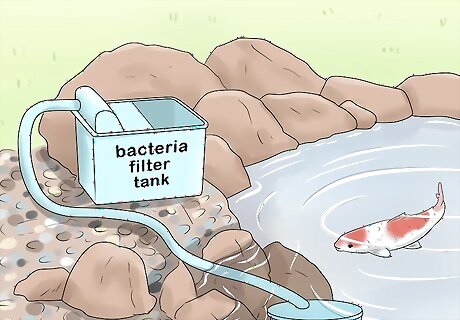
Install a bacteria tank for any fish you may want to keep in your pond (optional). If you decide to have Koi in your pond, this is a good time to install a bacteria tank to help keep the Koi alive.
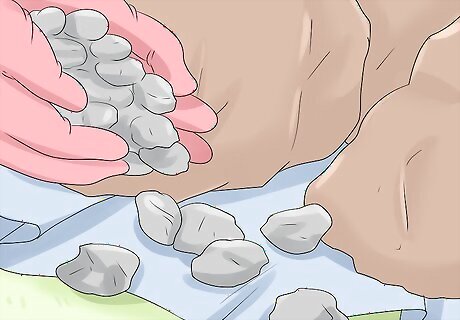
Layer gravel carefully across the bottom of any exposed surfaces of the liner.

Turn on the garden hose and spray down the entire area of your stream until the water level in the bottom basin is full.

Turn on the power for the pump and check that the water is flowing correctly. When the water begins running clear, move the pump over to the start of the waterfall and turn off the water from the garden hose. Make the pump less conspicuous by covering it with gravel or burying it in foliage.
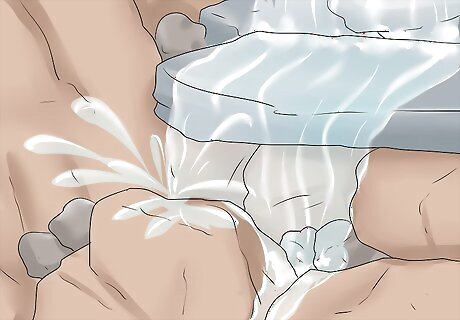
Check for incorrect water flow. Your waterfall should now begin flowing without the help of a garden hose. Check to make sure that the liner levels are all correct and that any splashing is contained by rocks.
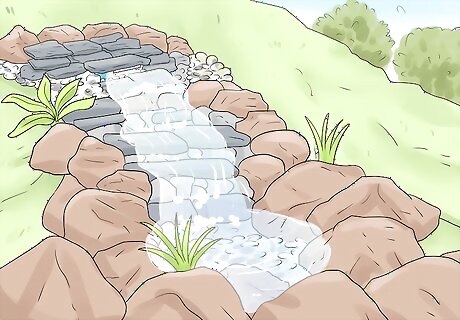
Finish off by trimming away any excess liner. Add aquatic or semi-aquatic plants to any bogs in your stream, and consider stocking your pond with fish. If you'd like, add drama with submersible lighting or outdoor lighting.













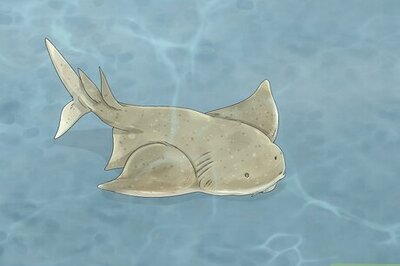
Comments
0 comment